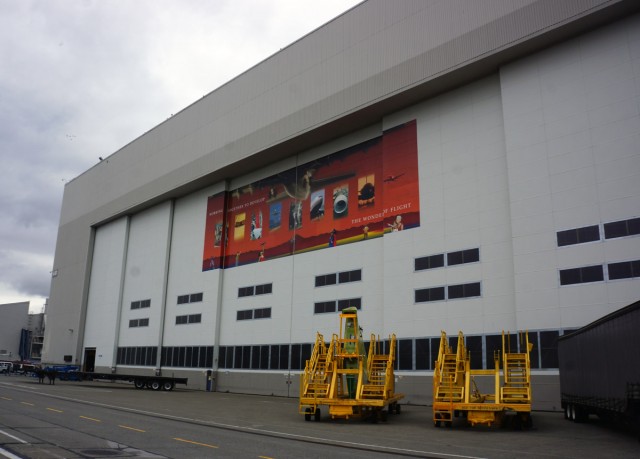
Outside the Boeing 737 Factory in Renton, WA. Photo by Chris Sloan / Airchive.com.
This story was written by Chris Sloan and originally was published on Airchive.com. This is the first of a multi-part series looking at the Boeing 737 factory in Renton.
On the evening of March 18, 2013 Boeing’s Renton Plant rolled out its first Boeing 737, a 737-800 bound for Panamanian Airline COPA, at the astounding new production rate of 38 aircraft per month. Boeing had only reached 35 airplanes per month, its previous historic high commercial production rate in January 2012. 2 days later on March 20, 2013, Boeing delivered the 7500th 737, the 7,229nd example built at Renton (more on this later). By Spring 2014, the rate is expected to leap to 42 aircraft per month.
In 2015, Renton will begin production of the new 737 MAX that is due to enter commercial service in 2017, 50 years after the 737 first entered service in 1967! The Boeing 737 is the best-selling and longest continuously produced commercial airliner of all time with over 10,500 deliveries and orders. As of April, 2013 between the new Max (1,234) and current the Next-Generation (4,395), the 737 backlog stands at 3,136 aircraft. With the increased production rates, the current order book will take 6 ½ years alone to clear. Boeing’s current market outlook estimates 23,000 new narrow body airliner orders in the 737 / A320 families category over the next 20 years. Three draw dropping data-points stand out:
- 40% of the world’s jetliner fleet has been manufactured at Renton.
- Renton has produced an astonishing total of over 15,000 aircraft making it one of the most prolific aircraft factories, and the most prolific jetliner factory in history.
- With approximately 5,600 737s in service, 25% of the world’s large jet fleet (non RJ) are Boeing 737s.
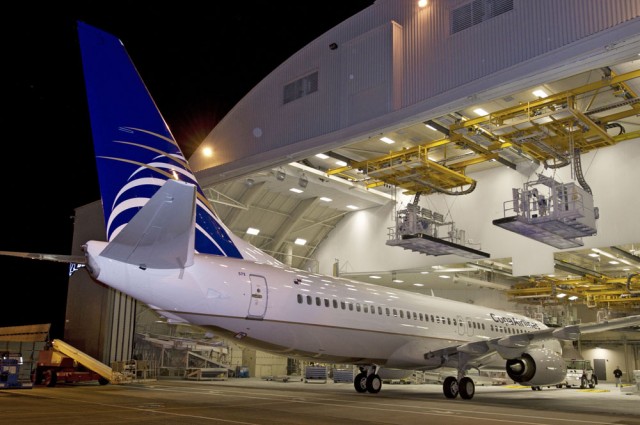
The first Boeing 737, a Dash 800 for COPA, to be produced at the increased 38 aircraft per month rate rolls-out of paint on March 18, 2013. Image courtesy: Boeing.
Success Breeds Competition: The Airbus A320 ups the ante and Boeing is forced to answer
In 1988, the first serious competitor to the 737 monopoly, the Airbus A320 entered service. With even more advanced systems like fly-by-wire flight controls, new higher powered and fuel efficient engines, a wider cabin, the first major use of composite materials in a narrow body airliner, and somewhat larger capacity on a direct model comparison basis, the A320 family quickly became a force to be reckoned with. In addition, Airbus offered aggressive pricing and quicker delivery windows. Having only recently launched the 2nd generation 737s, Boeing didn’t respond to the European framer’s challenge for another 5 years.
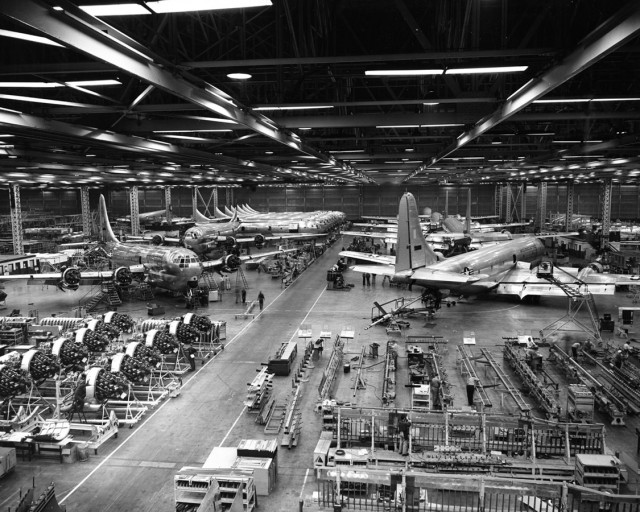
Boeing KC-97s under production in the late 1940s at Renton. The 377 Stratocruiser airliners were built at Boeing’s Plant 2 near Boeing Field.
Image Courtesy: Boeing
With eye-popping numbers like this, one has to ask how this relatively compact factory copes with the demands placed on it? As is often the case, history is a prelude to the present and predictor of the future. This story of superlatives dates back to the early 20th century. The land on the marshy shores of Lake Washington, a few miles southeast of Seattle, on the Cedar River, was used mainly as a hay farm.
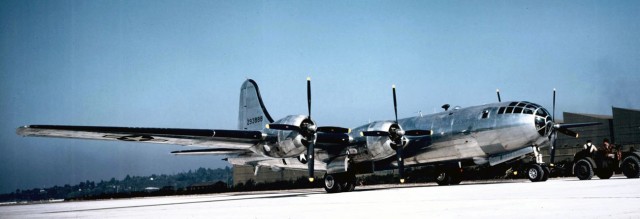
Renton is no stranger to high production rates. During WWII 1,119 B-29 Superfortresses were produced at Renton. Image courtesy: Boeing
The land was shortly transferred from its private owners to the state of Washington and finally the Federal government in 1941 as US involvement in WWII looked inevitable. According to Boeing’s Corporate Historian, Mike Lombardi ’œBoeing began construction in Renton of the XPB-1 Sea Ranger, an experimental reconnaissance flying boat for the US Navy. Exactly one of these was constructed when the order was cancelled to make way for production of the B-29 Superforetress for the US Army Air Force.
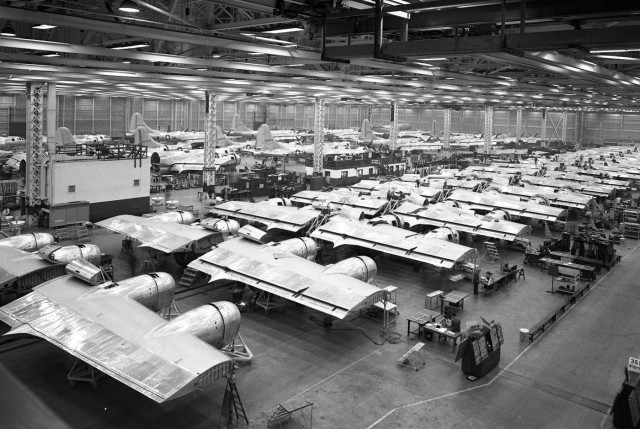
At the height of production, B-29s for the Air Force were assembled on 4 lines at Renton.
Image courtesy: Boeing
This was the most technologically advanced airplane of its day and at the height of production, Renton built 5 airplanes built per day and 160 built per month over 4 lines’. By the time production ceased in May 1946, Boeing had built an incredible 1,119 B-29s over a two and a half year period.
Extra: Original Boeing 377 Memorabilia
The Renton plant was returned to the government in 1946, but re-opened in 1948 by Boeing to build the C-97 Stratofreighter, which became the basis for the famous Boeing 377 Stratocruiser airliner. The uber-luxurios ’œStrat’, with its double deck cabin was considered the ’œ747 of the 1950s’. Boeing built 883 C/KC-97s and 56 377s at Renton.
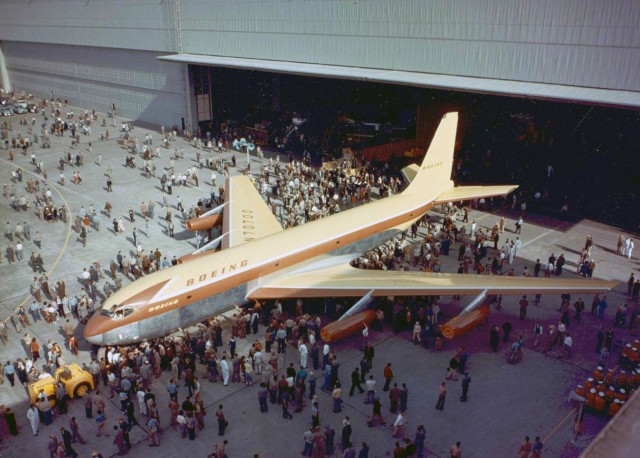
The predecessor to the Boeing 707, the famous 367-80, rolled out at Renton on May 15, 1954. It was the only one built; and is narrower then a 707. Image courtesy: Boeing
The next Renton milestone literally changed the world. It’s hard to believe that it has been almost 60 years since the May 1954 rollout of the Boeing 367-80 at Renton. This Dash 80 was the prototype for the KC-135 Stratotanker and set the stage for the first commercially successful jet airliner, the legendary Boeing 707 which kicked off the jet age. The first production Boeing 707 was rolled out at Renton on 28 October 1957 and production continued to the last commercial 707 in 1978 and E-3 AWACS in 1991. There were a total of 820 KC-135s and 1,010 707s built at Renton, including 154 Boeing 720s.
Extra: Original Boeing 707 Sales Brochures and Technical Briefings
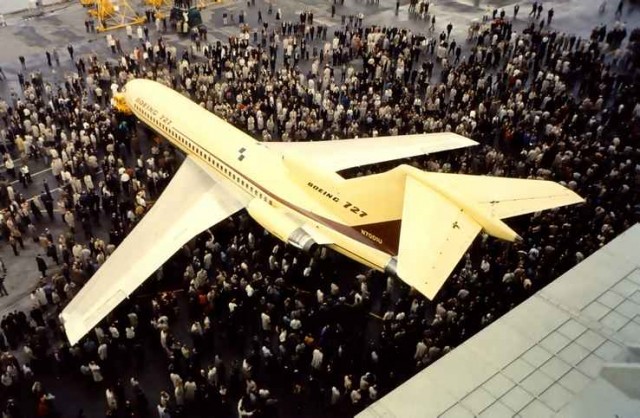
On November 27, 1962, Boeing rolled out the prototype of the Boeing 727 trijet at Renon. The 727 would become one of the most successful jet airliners of all time, until first eclipsed by 737. Image courtesy: Boeing
The same location was the home of the iconic Boeing 727. Up until the 737 surpassed it, the 727 was the world’s highest produced commercial jetliner with all 1,832 built between 1963-84 at Renton. All 1,050 of the 757, the 727’s heir apparent were built between 1981-2004, on what is now line 2 of the 737 program.
Extra: Original Boeing 727 Sales Brochures and Technical Briefings & Original Boeing 757 Sales Brochures and Technical Briefings
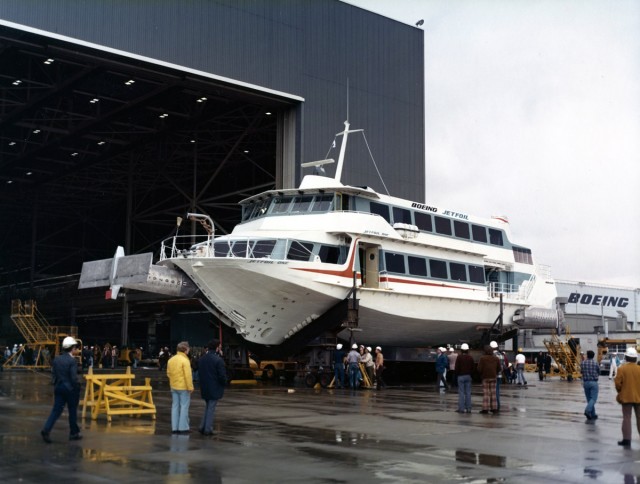
Planes weren’t the only thing built at Renton. Boeing launched three Jetfoil 929-100 hydrofoils that were acquired in 1975 for service in the Hawaiian Islands. When the service ended in 1979 the three hydrofoils were acquired by Far East Hydrofoil for service between Hong Kong and Macau. Image courtesy: Boeing
Lombardi points out a little known fact that ’œEverett wasn’t the only place for Boeing 747 work as the first 4 747s built were refurbished at Renton.’ In December 1969, a Jumbo destined for Pan Am (N732PA) landed short when landing on the 5,382 foot-long runway at Renton Municipal Airport. The right wing landing gear was torn from the aircraft and the number 3 and 4 engine nacelles contacted the runway. Up until, the building of 747 Factory at Everett in the late 1960s, the Renton final assembly hall for the 707s and 727s was the largest building in the world by volume. Today, Everett receives the lion’s share of the buzz, but Renton rules by sheer numbers.
Renton production wasn’t just limited to things with wings either. 24 Boeing Jetfoil commercial hydrofoil ship and 6 PHM USS Pegasus Class Missile-ships were built here as well.
Renton Production Numbers (as of February 2013):
- 1 x XPPB-1 Sea Ranger
- 1,119 x B-29A Superfortress
- 24 x TB-50H Superfortress
- 888 x C/KC-97 Stratofreighters
- 1 x 367-80 (Dash 80 prototype)
- 820 x C/KC-135
- 1,010 x 707/720
- 1,832 x 727
- 1,050 x 757
- 24 x Jetfoil commercial hydrofoil ships
- 6 x PHM USS Pegasus Class Missile-ships
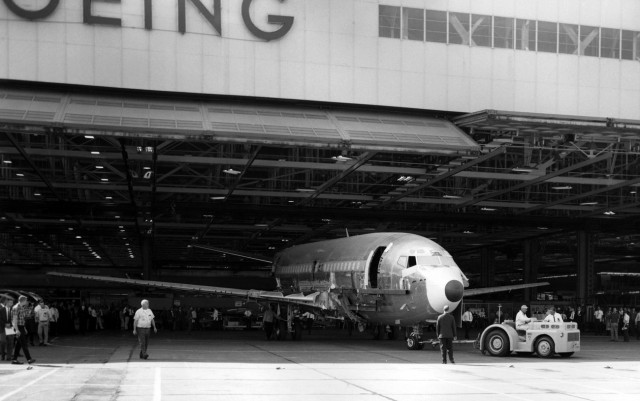
The prototype Boeing 737 rolls out of the original factory adjacent to Boeing Field. The factory wasn’t tall enough so the tail had to be attached after each one rolled out. Image courtesy: Boeing
737 production at Renton (7,491 through February 20, 2013):
- 1,114 x 737-200 (1967- 1988)
- 1,113 x 737-300 (1984-1999)
- 486 x 737-400 (1988 ’“ 2000)
- 389 x 737-500 (1990-1999)
- 69 x 737-600 (1998 ’“ 2006)
- 1,089 x 737-700 (1997 ’“ 2013)
- 111 x 737-700 BBJ
- 15 x 737-700C
- 14 x 737-700 AEW&C
- 2,809 x 737-800 (1998 ’“ 2013)
- 21 x P-8A/I
- 18 x 737-800 BBJ
- 52 x 737-900 (2001-2005)
- 155 737-900ER (2007-2013)
- 6 x 737-900 BBJ
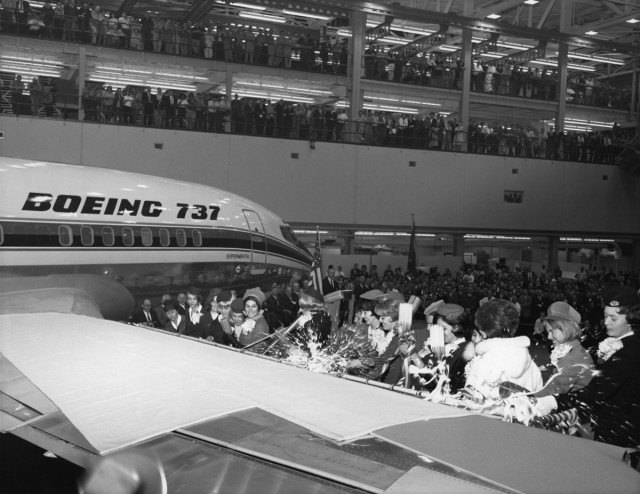
The original Boeing 737 prototype is given a champagne christening during the January 17, 1967 roll out event by flight attendants representing the aircraft’s customers. Image courtesy: Boeing
Birth of a legend: The Baby Boeing
Due to the bustling production of the 707 and 727 production and future Boeing SST production during the 1960s jet boom at the plant, 737 production didn’t begin at Renton. At 95 acres and 2.3 million square foot, the plant was just too busy to take on another program. The first 271 Boeing 737-100s and 737-200s, built between 1966 and early 1970, were produced at a factory adjacent to Boeing Field.
Extra: Original Boeing 737 Sales Brochures and Technical Briefings
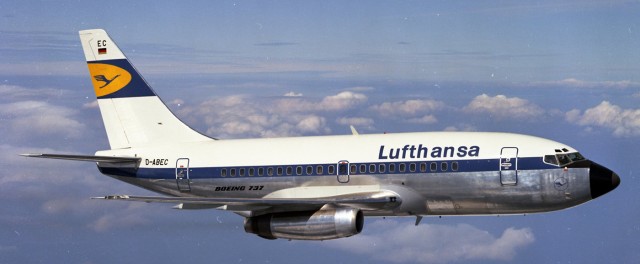
Lufthansa Boeing 737-100 D-ABEC was the 4th 737 off the line and one of the 6 originally involved in the test program. Long since scrapped in 1995 at Marana, AZ, it was last registered to Ansett New Zealand. This 737 was also owned by America West Airlines. Image Courtesy: Boeing
It’s hard to comprehend that the world’s most successful airliner was almost killed. Initial airline reaction to the 737 was tepid at best, with Lufthansa taking the first 21 Boeing 737-100s, entering service in February 1968. United placed the second order for the 737 with 40 orders for the stretched 737-200. The Dash 200 became the successor to the 737-100 (only generating 30 orders) and new standard of the first generation. United’s 737-200s began service in April 1968.
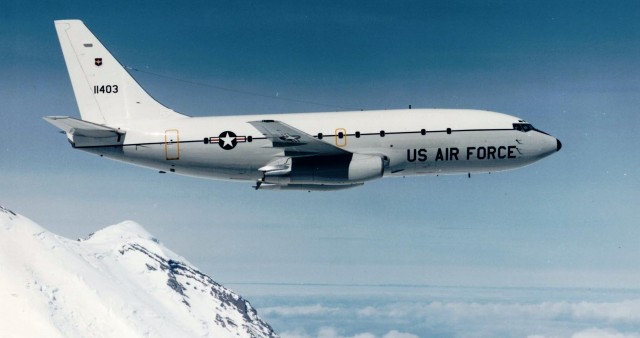
The US Air Force version of the 737, the T-43A, essentially saved the 737 program in the early 1970s when commercial orders had dried up. Image courtesy: Boeing
Due to industry capacity and a severe economic downturn in 1970, airliner orders nearly came to a halt. Boeing having just launched the 747 was seriously affected and had it not been for the Air Force’s order for 19 T-43s (military 737), the program would likely have been cancelled. In an effort to cut cost and increase efficiency all singe aisle programs were consolidated at Renton The 737 moved to the major assembly building 4-82 at Renton beginning with L/N 272. 737s and 727s were built in same building, with aircraft arranged in 2 rows at angles to the wall. This production system would last well into the 1990s and have severe consequences in the years to come as we’ll delve into later.
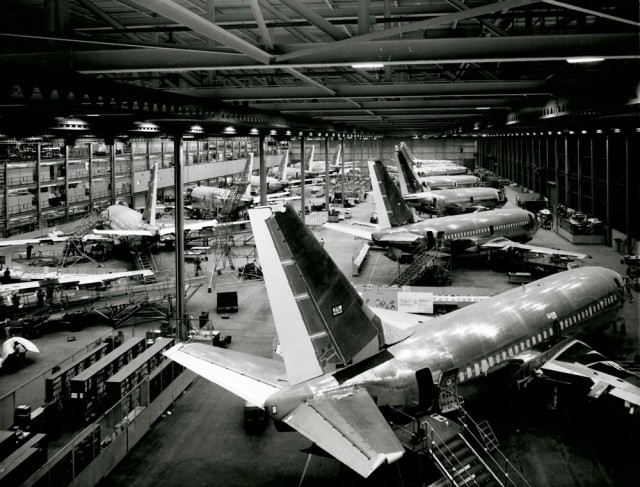
The original Boeing 737 assembly line at Boeing Field’s Thompson facility in the late 1960s before production moved to Renton. Image Courtesy: Boeing
From a sales standpoint, the 737 wasn’t exactly a barn burner through the 1970s as it took 10 years to reach 500 planes sold with the 500th example delivered to Gulf Air in 1977. Nevertheless, the order book gradually began to gain momentum especially as airlines such as Southwest, Frontier, United, Delta, Lufthansa, Air California, and British Airways warmed to the type’s economics with its ability to fly profitably on short-haul segments because of its fuel-efficient twin-engine and 2-man crew configuration.
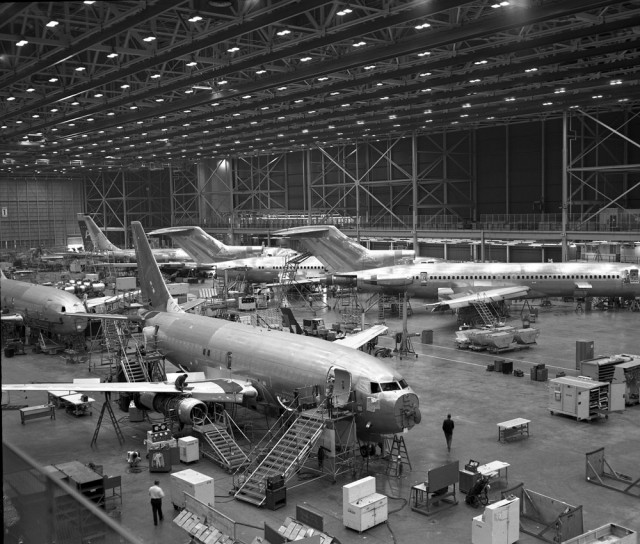
From 1970, this is the first 737 to be produced at Renton. After 271 Boeing 737s were produced at the Boeing Field factory, production of Boeing’s small twin switched over to Renton, joining 727s and 707s at the site. Image courtesy: Boeing
The June 1971 introduction of the 737-200 Advanced model after L/N 135 that gave the Boeing baby twin a 15% increase in payload and range over the original -200s was a particular boost, even in the face of rising fuel prices and the weak economy of much of the 1970s and early 1980s. The 200s were produced until 1988 with 1,114 aircraft rolling off the line.
The Boeing 737 really came into its own when the 2nd generation 737 series entered service in 1984, beginning with Southwest Airlines. First flying on February 24, 1984 as the 1,001st 737 built, the 737-300 featured many improvements including a CFM56-3B-1 high-bypass turbofan which generated significant improvements in fuel economy, range, and reduction in range.
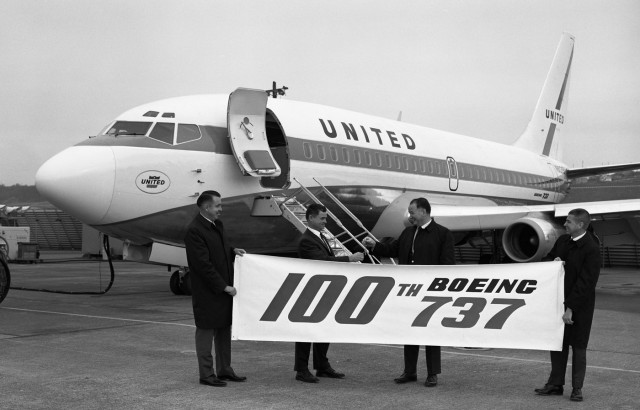
On December 6, 1968, United, the 2nd customer for the 737 after Lufthansa, received the 100th 737, a Boeing 737-200. Image courtesy: Boeing
The fuselage was stretched by 9 feet, 5 inches over the 737-200 adding passenger and cargo capacity that led to improved cost per passenger mile. The flight deck was updated with a ’œglass’ cockpit, a first in a single-aisle airliner. The wing and tailfin incorporated additional changes enhancing the Baby Boeing’s aerodynamics. The 737-400 stretched the platform even further entering service in 1988. A 737-200 sized version, the 737-500 entered service in 1990.
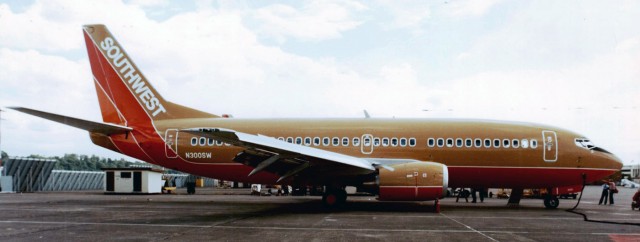
On November 30, 1984 Southwest took delivery of its first Boeing 737’“300, N300SW. It was the launch customer and as of May 2012 is the largest operator of the aircraft type with 125 still in service ’“ many with winglets. The first 737-300 was dubbed ’œKitty Hawk.’ It flew its final flight from Paine Field on April 18th, 2011 the first 737-300 is now preserved at the Museum of Flight at Dallas Love Field. Image courtesy: Boeing
The 2nd generation 737 family became a phenomenally successful workhorse for the world’s airlines for a variety of missions. Its success partially led to the demise of the 727 as many airlines built their fleets around the 737, particularly LCC phenomena’s Southwest and America West, as well as Chinese carriers who began to order in large numbers. A total of 1,988 of the 2nd generation 737s, now known as Classics, were built between 1984 and 2000. The 2,500th 737, a 737-300 was delivered to Southwest Airlines in June 1993.
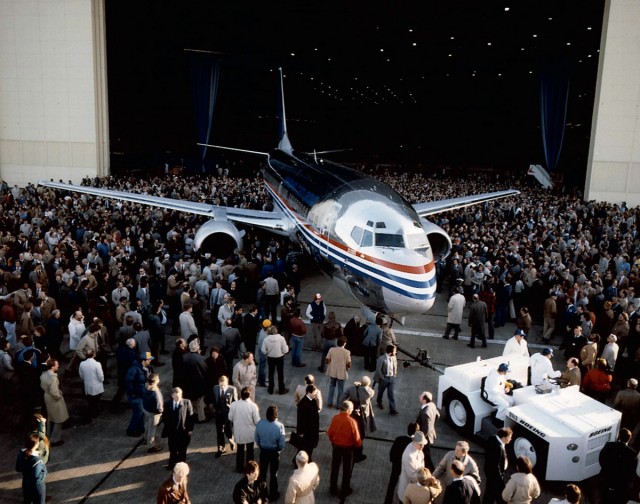
The prototype model of the 2nd generation 737, the Boeing 737-300, now known as the ’œClassic’ was rolled out at Renton on January 17, 1984. It first flew on 24 February 1984 and was eventually delivered to USAir. 1,113 737-300s were produced making it the most successful variant of the 2nd generation. Image courtesy: Boeing
Big Facts for The Baby Boeing
- Typically, about 50 gallons (189 liters) of paint are used to paint an average 737. Once the paint is dry, it will weigh approximately 250 pounds (113 kilograms) per airplane, depending on the paint scheme.
- With approximately 5,600 airplanes in service, the 737s (early 737s, Classic and Next-Generation) represent a quarter of the total worldwide fleet of large commercial jets flying today.
- More than 331 airlines in 111 countries fly 737s.
- On average, over 2,000 737 airplanes are in the air at any given time.
- One 737 takes off or lands every 2.0 seconds.
- For all 737 models, there are approximately 54,500 scheduled flights per day. This means that nearly 1/3 of all commercial flights are on 737s
- The 737 family has carried more than 16.4 billion passengers; that is equivalent to every single man, woman and child flying at least twice. (2012 world population was 7 billion)
- The 737 has flown more than 113 billion miles; equivalent to approximately 608 round trips from the earth to the sun.
- The 737 family has flown more than 176.5 million flights.
- The 737 family has flown more than 251 million flight hours; the equivalent to one airplane flying more than 28,656 years nonstop.
- 10,000 737s stacked on top of one another would be approximately 406,000 feet or 77 miles (124 kilometers) high, and is equivalent to 149 Burj Khalifa in Dubai, the tallest building in the world, stacked on top of one another.
- 10,000 737s at any one time would carry approximately 1,500,000 passengers.
Extra: View Full Boeing Renton Tour Photo Gallery
Special thanks to: Boeing’s Doug Alder, Jr; Michael Lombardi, and Erik Nelson for their invaluable time, expertise, and assistance in the writing of this post.
INSIDE BOEING’S 737 FACTORY: PART 1 | PART 2 | PART 3
 |
Chris Sloan, Correspondent. Chris has been an airline enthusiast, or #AvGeek, since he was 5 years old. Over the years, he has amassed an extensive collection of aviation memorabilia and photos that he shares on his site, Airchive.com. He is the President and Founder of the TV production and promotion company, 2CMedia.com and Executive Producer and Creator of ’œAirport 24/7’ Travel Channel series. |
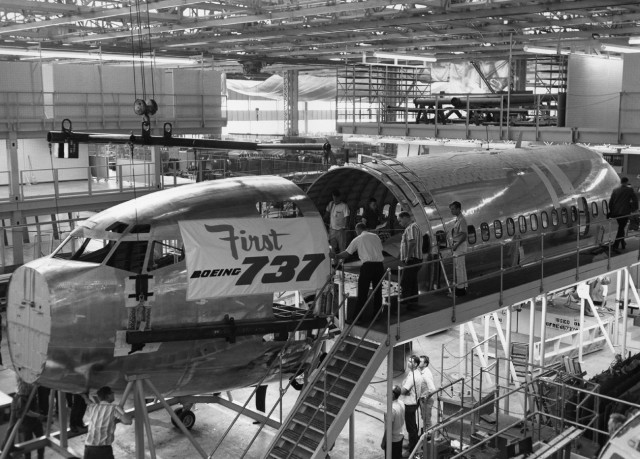
When I started work at Boeing in 1950 I was soon transferred to Renton to work on the KC-97G. I was there to see the 367-80 built and flown, the KC-135, 707, 707-320,720, and 727 launch their careers. I was then moved to the C-5 , SST, and 747 programs, then on to the 767, and 777. A lot of water under the bridge.
Excellent Report. If possible I would like to see a similar story from Everett, Wichita ( Spirit ), Long Beach ( Boeing-MDD ) and Lockheed Palmdale.It would be awesome also to see a story from the old factories from Grumman , Convair , etc….Thanks!
Good story, Chris; when talking about the 737, I like to point out how each fuselage built by Spirit in Wichita makes it first trip by rail! I even wrote a story and took some pics about it for Trains Magazine a few years ago. Fascinating process, especially considering how the fuselages are rubber-tired from the special flatcars via “dragsters” to the moving assembly line.
Mike H.
The A320 wasn’t the first serious competitor to the 737, it was the DC-9 which for many years outsold the 737. The 737 also wasn’t the first Narrowbody with a glass cockpit, that was again the DC-9 with the MD80. The 9 has always been better than the 7turdy7, DC-9s don’t lose fuselage skin in flight.
Many years ago I visited the museum at Boeing Field. While in the souvenir shop I ran across a book with a chapter about the 737. It stated that in the early days of 737 development, working on it was considered ‘the punishment project’. Basically if you were a ‘bad apple’ at Boeing you were put to work on the 737. If this is true, it would seem that those ‘bad apples’ had the ‘last laugh’.
Does anyone know the building # at the Boeing Renton site…I believe it was the “old” admin bldg on the corner of Park Ave N & N 8th. The building was demolished I believe in the 80s…The building was the office for many executives and had an “executive” dining room. This was before the Boeing Longacres site was constructed. Thx!
I believe you are referring to 10-60 Bldg, the old ‘plywood palace’. Adjacent bldg just north was 10-65 bldg held mock-up and some engineering. Gone now, replaced with retail and apartments